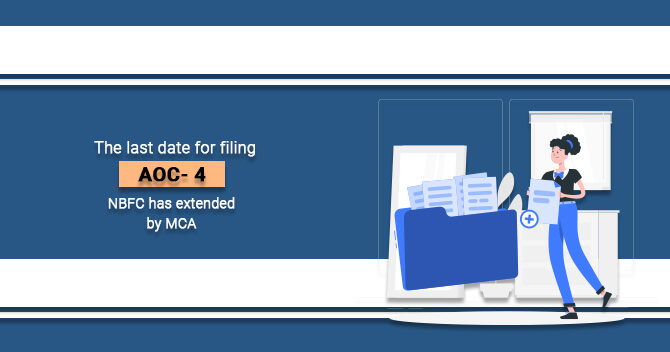Liquidity crunch increased asset quality stress, and the Covid-19 pandemic has made private lenders of this country reconstruct their business models. Business horizon has changed across sectors & the same fallout has disrupted Non-Banking Financial Companies too.
Pre Covid-1 has forced private lenders to leap into the modification and identified other income sources. The core business of lending credit and credit facilities was further shrunk owing to a liquidity crunch.
How Covid 19 Caused Breakdown to Non-Banking Financial Companies in India?
- Being an essential facet of the banking sector, Non-Banking Financial Companies were always praised for easy and seamless lending. During the pre-covid era, this sector was flourishing and is expected to secure a prominent place. But after the spread of this deadly virus, Non-Banking Financial Companies witnessed sudden shrinkage of loan demand, which further converted into a massive liquidity crisis.
- Further, such disruption dented their ability to lend further as most of these firms found it hard to optimize their cash flow management.
- Post-Covid, the Indian Government announced the nationwide lockdown that continued for months, leaving most private lenders in the woe of soaring liabilities.
- The personal loans segment, which is considered the primary income generator for Non-Banking Financial Companies, posted a growth of 26.5% at the end of March, 2020. But soon after the pandemic hit the nation, the portfolio outstanding of the same segment stood at 5.1Trillions.
- Post-September 2018, the Non-Banking Financial Companies encountered the liquidity crunch phase, which limited their funding avenues & escalated their borrowing cost. The sector had to act swiftly through reducing capital market borrowing, slowing down disbursements, optimizing asset & liability management profiles, and securing cash reserves. Unfortunately, their plan to mitigate the threats above was hindered by the unprecedented COVID-19 situation.
- As per the rating agency, the pandemic has arrived at the time when Non-Banking Financial Companies have encountered improvement in cash reserves as companies minimized their short-term borrowings and shifted toward bank borrowings.
- Banks lending to Non-Banking Financial Companies posted growth of approx 48% from Sep 2018 to March 2020. At present, where Non-Banking Financial Companies are finding it had to procure funds from the capital market owing to higher cost & scarcity of funding avenues, there has been a shift to bank borrowings.
- Amid unprecedented liquidity crunch & the repercussion of the NBFC crisis, Non-Banking Financial Companies had reduced funding access to the primary market and shifted towards the banks.
- Covid Era forced the Mutual funds and other investors to take a back step and showed nil interest in buying the Non-Banking Financial Companies’ debt.
Read our article:Regulations governing NBFCs in India: A Complete Overview
How Government Responded to this Relentless Situation?
Being aware of repercussion caused by the Covid 19, the Government of India decided to retaliate the situation by introducing the following schemes: –


Announcement of 3 months Moratorium
To overcome the load of soaring debt incurred by the Covid-19 pandemic, the Reserve Bank unveiled certain regulatory measures. The Reserve Bank of India announced three months moratorium to borrowers of both Non-Banking Financial Companies and Banks. All Non-Banking Financial Companies have extended the option of providing moratorium to their clients, limiting to those who would like to access this facility.
There was some vagueness on whether Non-Banking Financial Companies can avail moratorium offered by the bank on their borrowings. After a prolonged meeting of Non-Banking Financial Companies and top banks with Reserve Bank Governor on 4 May 2020, banks have decided to extend the moratorium to their NBFC and HFC clients accordingly on a case-by-case basis.
Relief Packages for Small Lenders
The smaller lenders took the initial blowing of COVID 19, and when the situation went out of control, the Indian Government decided to roll out liquidity support to such lenders.
This initiative was taken because these lenders mainly serve the lower strata of society. While making announcements about the scheme, the Government assured extensive and partial guarantees on investments in debt securities issued by the Non-Banking Financial Companies under two different schemes.
The first scheme was the Rs 30,000 crore special liquidity facility which allows Non-Banking Financial Companies, HFCs, and MFIs to raise funds through debt securities. While rolling out, the scheme government assured to render extensive guarantees.
This facility provided the much-needed resilience to the private lenders as it allows them to create demand for securities and generates much-needed liquidity.
Announcement of Rs 3 Lakh Crore Package
In addition to the scheme above, the Government of India decided to unveil yet another scheme that largely benefitted the low-rated NBFCs and MFIs i.e., microfinance companies. The scheme aimed to overcome the fundamental issues of lower-rated Non-Banking Financial Companies.
For investment in said securities, the Indian Government was decided to ensure a 20% first loss guarantee. The scheme largely remained accessible to lower-rated and unrated securities. The Government[1] also dispended the historic Rs 3 lakh crore packages to the MSMEs sector that helped NBFCs stabilize their balance sheet.
Conclusion
Most NBFC do not have optimized cash flow because they usually manage liquidity by matching cash inflows from the loan repayment with cash outflows to repay their liabilities. There could probably be the reason why these firms had such a hard time during Covid 19 Era.
Non-Banking Financial Companies’ core strength includes servicing reach, customer base, faster scale-up and scale-down capability, strong distribution, flexible business model, and lesser technology debt. The Non-Banking Financial Companies have also been agile in implementing newer technologies such as API-based validation of KYC, eKYC, eSignature, video-based customer engagement, and behavioral analytics based on alternate sources of data, etc.
Through these technologies, they can attract more customers for loans and stabilizes their financial standing. Even though it sounds like a half-baked approach, it has the potential to garner some clients even in the most demanding situation.
Read our article:Types of NBFCs in India – An Overview











